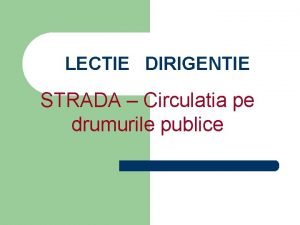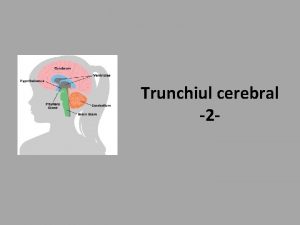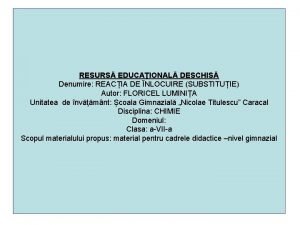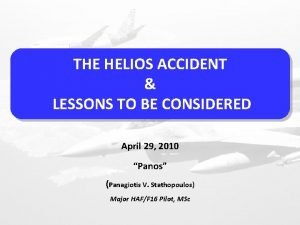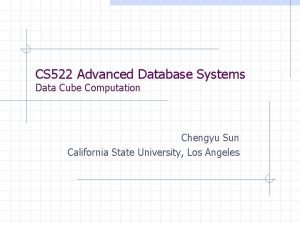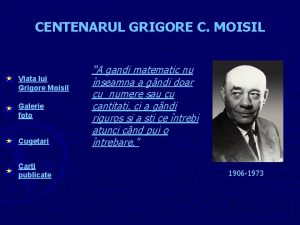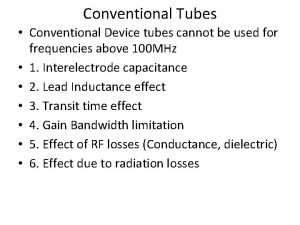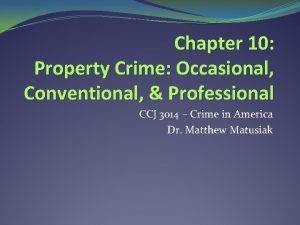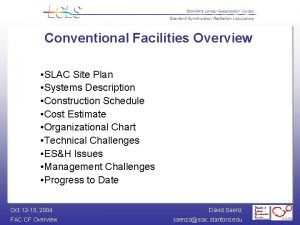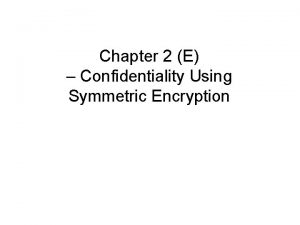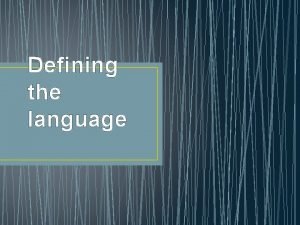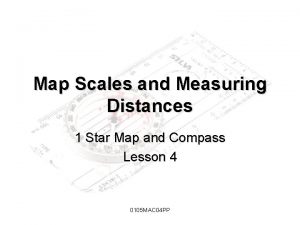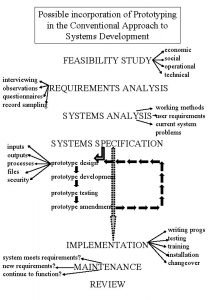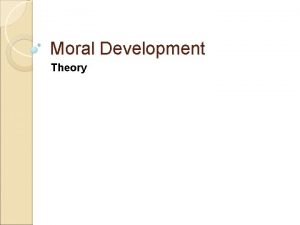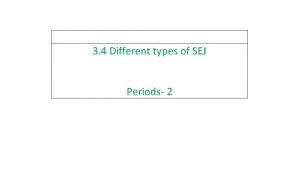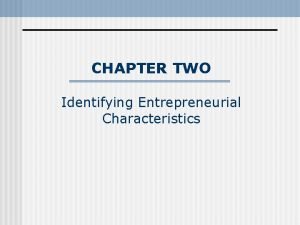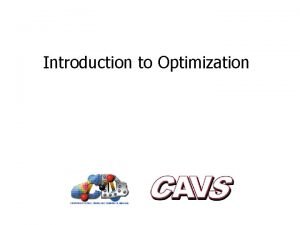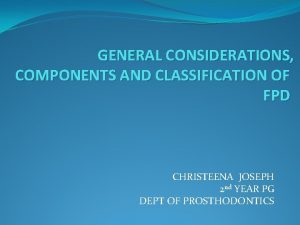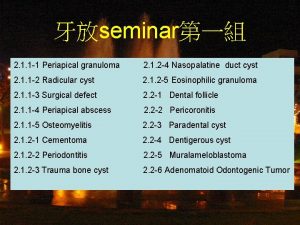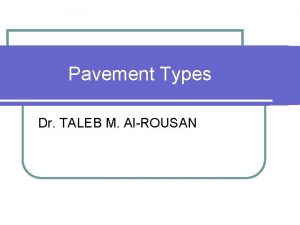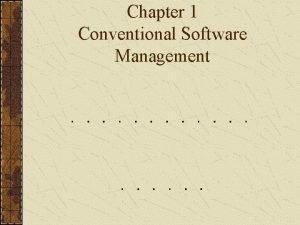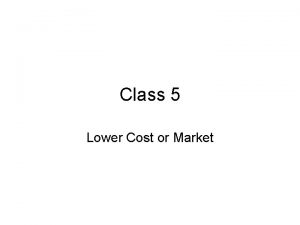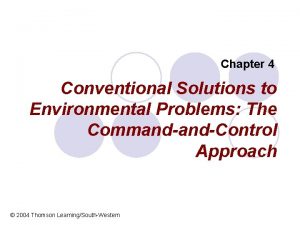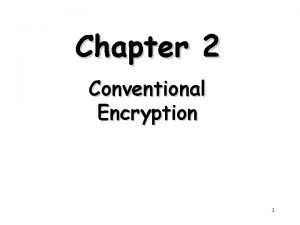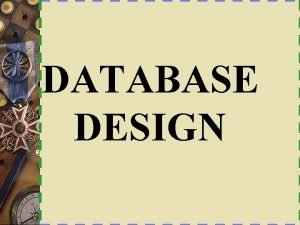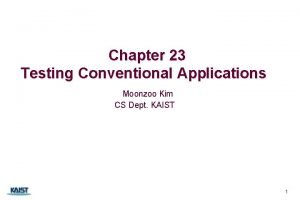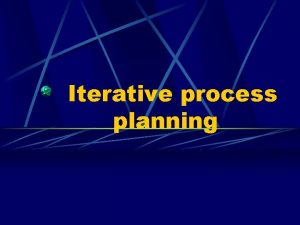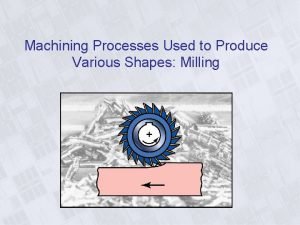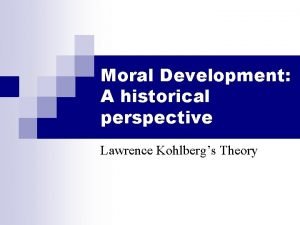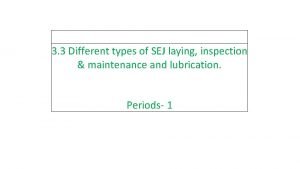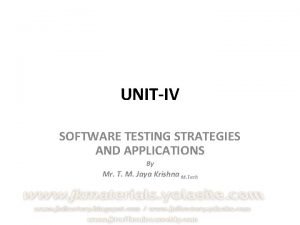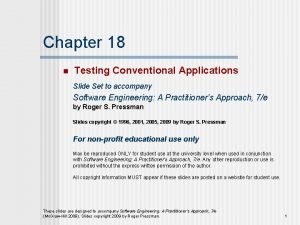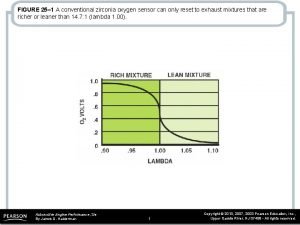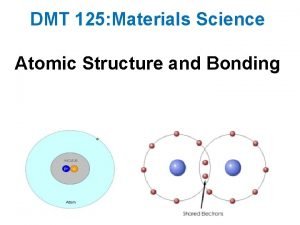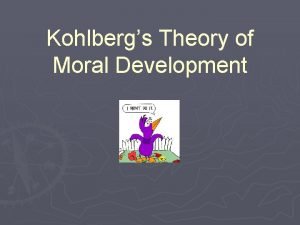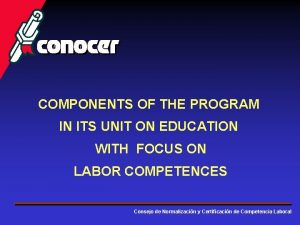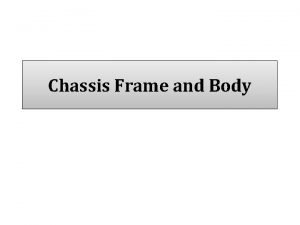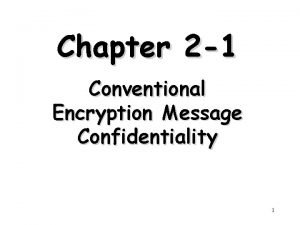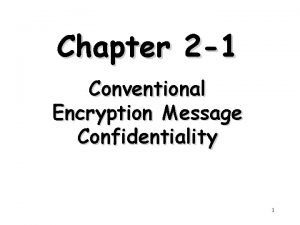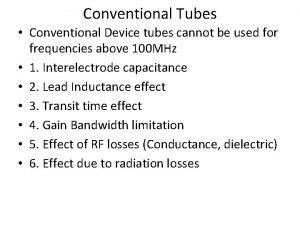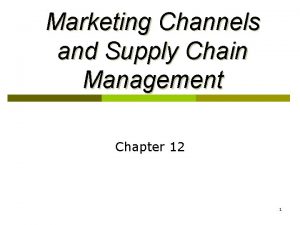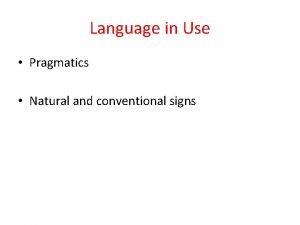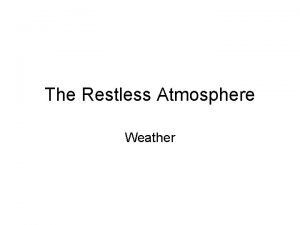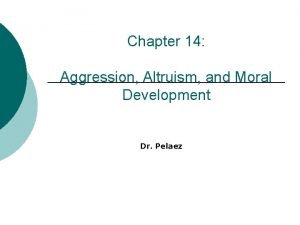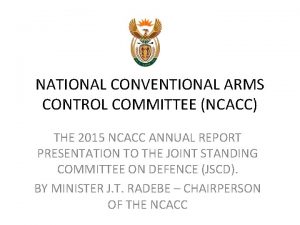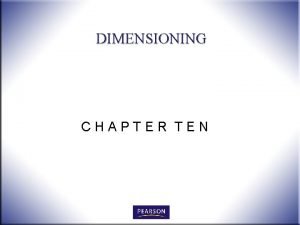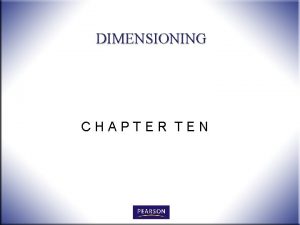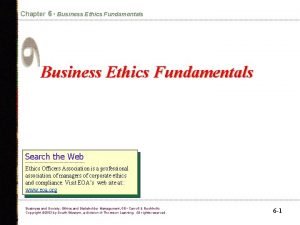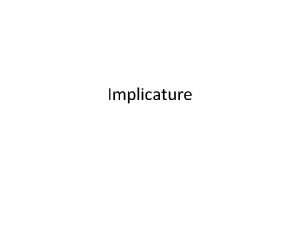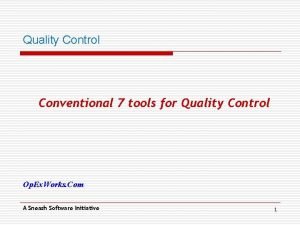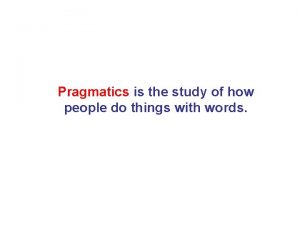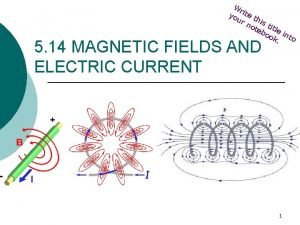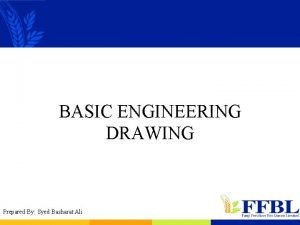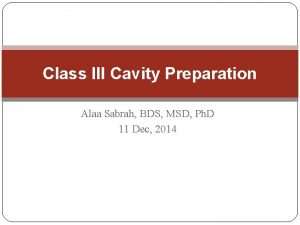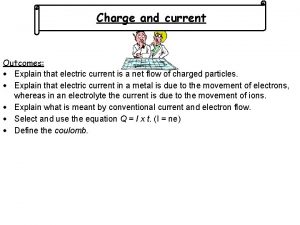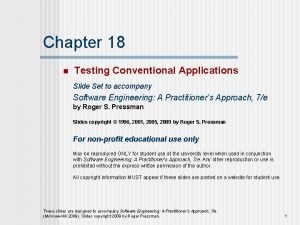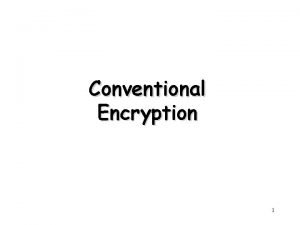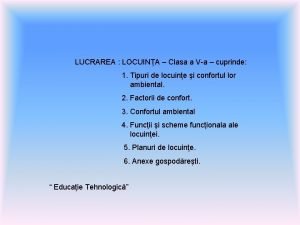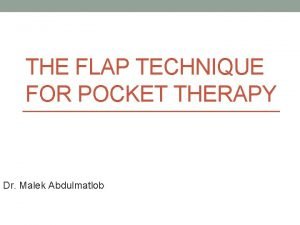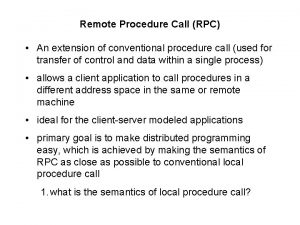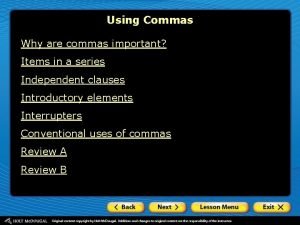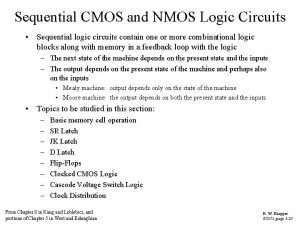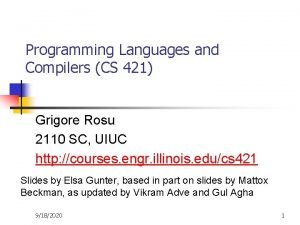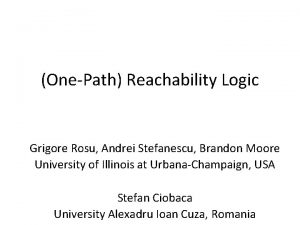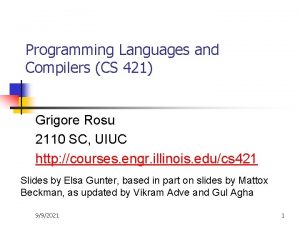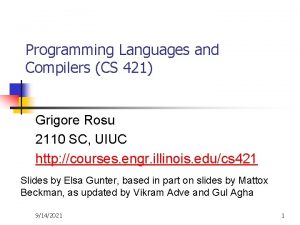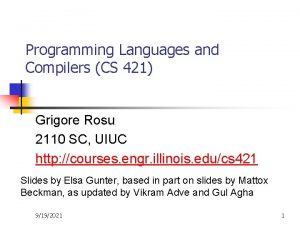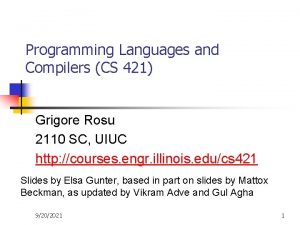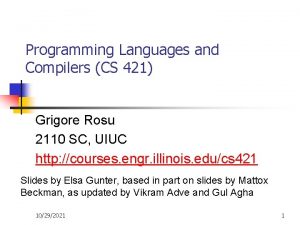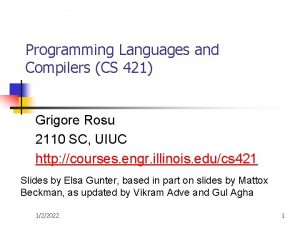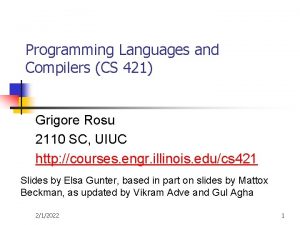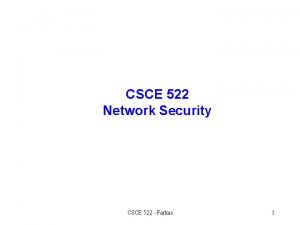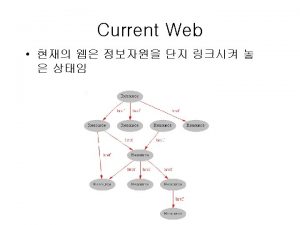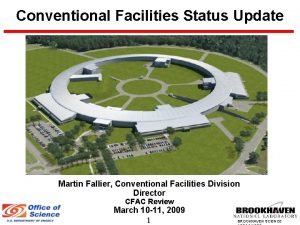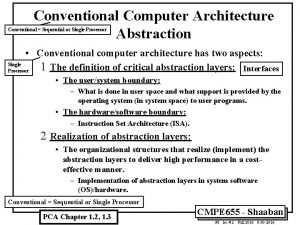1 CONVENTIONAL SEMANTIC APPROACHES Grigore Rosu CS 522





















































































































- Slides: 117

1 CONVENTIONAL SEMANTIC APPROACHES Grigore Rosu CS 522 – Programming Language Semantics

2 Conventional Semantic Approaches A language designer should understand the existing design approaches, techniques and tools, to know what is possible and how, or to come up with better ones. This part of the course will cover the major PL semantic approaches, such as: Big-step structural operational semantics (Big-step SOS) Small-step structural operational semantics (Small-step SOS) Denotational semantics Modular structural operational semantics (Modular SOS) Reduction semantics with evaluation contexts Abstract Machines The chemical abstract machine Axiomatic semantics

3 IMP A simple imperative language

4 IMP – A Simple Imperative Language We will exemplify the conventional semantic approaches by means of IMP, a very simple non-procedural imperative language, with Arithmetic expressions Boolean expressions Assignment statements Conditional statements While loop statements Blocks

IMP Syntax 5 Suppose that, for demonstration purposes, we want “+” and “/” to be non-deterministically strict, “<=“ to be sequentially strict, and “&&” to be short-circuited Commaseparated list of identifiers

IMP Syntax in Maude 6

IMP State 7 Most semantics need some notion of state. A state holds all the semantic ingredients to fully define the meaning of a given program or fragment of program. For IMP, a state is a partial finite-domain function from identifiers to integers (i. e. , a function defined only on a finite subset of identifiers and undefined on the rest), written using a half-arrow: We let State denote the set of such functions, and may write it or

8 Lookup, Update and Initialization We may write states by enumerating each identifier binding. For example, the following state binds x to 8 and y to 0: = Typical state operations are lookup, update and initialization Lookup Update Initialization

IMP State in Maude 9

10 BIG-STEP SOS Big-step structural operational semantics

11 Big-Step Structural Operational Semantics (Big-Step SOS) Gilles Kahn (1987), under the name natural semantics. Also known as relational semantics, or evaluation semantics. We can regard a big-step SOS as a recursive interpreter, telling for a fragment of code and state what it evaluates to. Configuration: tuple containing code and semantic ingredients � E. g. , Sequent: Pair of configurations, to be derived or proved � E. g. , Rule: Premises � Tells how to derive a sequent from E. g. , Conclusio n Read others “evaluates to” May omit line when no

12 Big-Step SOS of IMP Arithmetic State lookup Read: “provided that a 1 evaluates to i 1 in and a 2 evaluates to i 2 in , then a 1 + a 2 evaluates to the integer sum of i 1 and i 2 in Side condition ensures rule will never apply when a 2 evaluates to 0

Big-Step SOS of IMP - Boolean 13

14 Big-Step SOS of IMP Statements State updat e

15 Big-Step SOS of IMP Programs State initializatio n

Big-Step Rule Instances 16 Rules are schemas, allowing recursively enumerable many instances; side conditions filter out instances � E. g. , these are correct instances of the rule for division The second may look suspicious, but it is not. Normally, one should never be able to apply it, because one cannot prove its hypotheses � However, the following is not a correct instance (no matter what ? is):

Big-Step SOS Derivation 17 The following is a valid proof derivation, or proof tree, using the big-step SOS proof system of IMP above. Suppose that x and y are identifiers and (x) = 8 and (y) = 0.

Big-Step SOS for Type Systems 18 Big-Step SOS is routinely used to define type systems for programming languages The idea is that a fragment of code c, in a given type environment , can be assigned a certain type . We typically write instead of Since all variables in IMP have integer type, can be replaced by a list of untyped variables in our case. In general, however, a type environment contains typed variables, that is, pairs “x : ”.

Typing Arithmetic Expressions 19

Typing Boolean Expressions 20

Typing Statements 21 The type of s can be either block or stmt

Typing Programs 22

Big-Step SOS Type Derivation 23 Like the big-step rules for the concrete semantics of IMP, the ones for its type system are also rule schemas. We next show a proof derivation for the well-typed-ness of an IMP program that adds all the numbers from 1 to 100: where

Big-Step SOS Type Derivation 24

Big-Step SOS Type Derivation 25

26 Big-Step SOS in Rewriting Logic Any big-step SOS can be associated a rewrite logic theory (or, equivalently, a Maude module) The idea is to associate to each big-step SOS rule a rewrite rule (over-lining means “algebraization”)

27 SMALL-STEP SOS Small-step structural operational semantics

28 Small-Step Structural Operational Semantics (Small-Step SOS) Gordon Plotkin (1981) Also known as transitional semantics, or reduction semantics One can regard a small-step SOS as a device capable of executing a program step-by-step Configuration: tuple containing code and semantic ingredients � Sequent (transition): Pair of configurations, to be derived (proved) � E. g. , Rule: Tells how to derive a sequent from others � E. g. ,

29 Small-Step SOS of IMP Arithmetic State lookup + is non-deterministic (its arguments can evaluate in any order, and interleaved

30 Small-Step SOS of IMP Arithmetic / is also nondeterministic Side condition ensures rule will never apply when denominator is 0

31 Small-Step SOS of IMP Boolean Ensures sequenti al strictnes s

32 Small-Step SOS of IMP Boolean Shortcircuit semantics

Small-Step SOS Derivation 33 The following is a valid proof derivation, or proof tree, using the small-step SOS proof system for expressions of IMP above. Suppose that x and y are identifiers and (x)=1.

34 Small-Step SOS of IMP Statements State updat e

35 Small-Step SOS of IMP Statements State initializatio n

36 Small-Step SOS in Rewriting Logic Any small-step SOS can be associated a rewrite logic theory (or, equivalently, a Maude module) The idea is to associate to each small-step SOS rule a rewrite rule (the circle means “ready for one step”)

37 DENOTATION AL Denotational or fixed-point semantics

Denotational Semantics 38 Christopher Strachey and Dana Scott (1970) Associate denotation, or meaning, to (fragments of) programs into mathematical domains; for example, � The denotation of an arithmetic expression in IMP is a partial function from states to integer numbers � The denotation of a statement in IMP is a partial function from states to states

Denotational Semantics Partial because some expressions some statements in may be. Christopher undefined Strachey and Dana Scott some(1970) states may in some states denotation, or meaning, to use undefined Associate (e. g. , (fragments division by of) programs into mathematical expressions, or may zero) not terminate 39 domains; for example, � The denotation of an arithmetic expression in IMP is a partial function from states to integer numbers � The denotation of a statement in IMP is a partial function from states to states

40 Denotational Semantics Terminology Denotatio n (function) Fragment of program Mathematic al domain

41 Denotational Semantics Compositional Once the right mathematical domains are chosen, giving a denotational semantics to a language should be a straightforward and compositional process; e. g. The hardest part is to give semantics to recursion. This is done using fixed-points.

Mathematical Domains 42 Mathematical domains can be anything; it is common though that they are organized as complete partial orders with bottom element The partial order structure captures the intuition of informativeness: a b means a is less informative than b. E. g. , as a loop is executed, we get more and more information about its semantics Completeness means that chains of more and more informative elements have a limit The bottom element, written , stands for undefined, or no information at all

Partial Orders 43 Partial order which is is set and binary rel. � Reflexive: � Transitive: � Anti-symmetric: Total order = partial order with Important example: domains of partial functions iff and defined everywhere is defined

(Least) Upper Bounds 44 An upper bound (u. b. ) of is any element such that for any The least upper bound (l. u. b. ) of , written , is an upper bound with for any u. b. � When they exist, least upper bounds are unique The domains of partial functions, , admit upper bounds and least upper bounds if and only if all the partial functions in the considered set are compatible: any two agree on any element in which both are defined

Complete Partial Orders (CPO) 45 A chain in is an infinite sequence also written Partial order is a complete partial order (CPO) iff any of its chains admits a least upper bound is a bottomed CPO (BCPO) iff is a minimal element of , also called its bottom The domain of partial functions is a

46 Monotone and Continuous Functions monotone iff implies Monotone functions preserve chains: chain implies � However, chain they do not always preserve l. u. b. of chains continuous iff monotone and preserves l. u. b. of chains: , the domain of continuous functions between two BCPOs, is itself a BCPO

Fixed-Point Theorem 47 Let be a BCPO and be a continuous function. Then the l. u. b. of the chain is the least fixed-point of � Typically written Proof sketch:

48 Applications of Fixed-Point Theorem Consider the following “definition” of the factorial: This is a recursive definition � Is it well-defined? Why? � Yes. Because it is the least fixed-point of the following continuous (prove it!) function from to itself

49 Denotational Semantics of IMP Arithmetic Expressions

50 Denotational Semantics of IMP Boolean Expressions

51 Denotational Semantics of IMP Statements (without loops)

52 Denotational Semantics of IMP While We first define a continuous function as follows Then we define the denotational semantics of while

53 Formalizing Denotational Semantics A denotational semantics is like a “compiler” of the defined programming language into mathematics Formalizing denotational semantics in RL reduces to formalizing the needed mathematical domains: � Integers, Booleans, etc. � Functions (with cases) and function applications � Fixed-points Such mathematics is already available in functional programming languages, which makes them excellent candidates for

54 Denotational Semantics in Rewriting Logic Rewriting/equational logics do not have builtin functions and fixed-points, so they need be defined They are, however, easy to define using rewriting � In fact, we do not need rewrite rules, all we need is equations to define these simple domains � See next slide

Functional CPO Domain 55

56 Denotational Semantics of IMP in RL Signature

57 Denotational Semantics of IMP in RL Arithmetic Expressions

58 Denotational Semantics of IMP in RL Boolean Expressions

59 Denotational Semantics of IMP in RL Statements and Programs

60 MSOS Modular structural operational semantics

61 Modular Structural Operational Semantics (Modular SOS, or MSOS) Peter Mosses (1999) Addresses the non-modularity aspects of SOS � � A definitional framework is non-modular when, in order to add a new feature to an existing language, one needs to revisit and change some of the already defined, unrelated language features The non-modularity of SOS becomes clear when we define IMP++ Why modularity is important � � Modifying existing rules when new rules are added is error prone When experimenting with language design, one needs to make changes quickly; having to do unrelated changes slows us down

Philosophy of MSOS 62 Separate the syntax from configurations and treat it differently Transitions go from syntax to syntax, hiding the other configuration components into transition labels Labels encode all the non-syntactic configuration changes Specialized notation in transition labels, to � � Say that certain configuration components stay unchanged Say that certain configuration changes are propagated from the premise to the conclusion of a rule

MSOS Transitions 63 An MSOS transition has the form � � P and P’ are programs or fragments of program is a label describing the changes in the configuration components, defined as a record; primed fields stay for “after” the transition Example: � This rule can be automatically “desugared” into the SOS rule But also into (if the configuration contains more components, like in IMP++)

MSOS Labels 64 Labels are field assignments, or records, and can use “…” for “and so on”, called record comprehension Fields can be primed or not. � � Unprimed = configuration component before the transition is applied Primed = configuration component after the transition is applied Some fields appear both unprimed and primed (called read-write), while others appear only primed (called write -only) or only unprimed (called read-only)

MSOS Labels 65 Field types � Read/write = fields which appear both unprimed and unprimed � Write-only = fields which appear only primed � Read –only = fields which appear only unprimed

MSOS Rules 66 Like in SOS, but using MSOS transitions as sequents Same labels or parts of them can be used multiple times in a rule Example: � Same means that changes propagate from premise to conclusion The author of MSOS now promotes a simplifying notation � If the premise and the conclusion repeat the same label or part of it, simply drop that label or part of it. For example:

MSOS of IMP - Arithmetic 67 State lookup

MSOS of IMP - Arithmetic 68

MSOS of IMP - Boolean 69

MSOS of IMP - Boolean 70

MSOS of IMP - Statements 71

MSOS of IMP - Statements 72

MSOS in Rewriting Logic 73 Any MSOS can be associated a rewrite logic theory (or, equivalently, a Maude module) Idea: � � � Desugar MSOS into SOS Apply the SOS-to-rewriting-logic representation, but Hold the non-syntactic configuration components in an ACIdata-structure, so that we can use ACI matching to retrieve only the fields of interest (which need to be read or written to)

MSOS of IMP in Maude 74 See file � imp-semantics-msos. maude

75 RSEC Reduction semantics with evaluation contexts

76 Reduction Semantics with Evaluation Contexts (RSEC) Matthias Felleisen and collaborators (1992) Previous operational approaches encoded the program execution context as a proof context, by means of rule conditions or premises � This has a series of advantages, but makes it hard to define control intensive features, such as abrupt termination, exceptions, call/cc, etc. We would like to have the execution context explicit, so that we can easily save it, change it, or even delete it Reduction semantics with evaluation contexts does precisely that � � � It allows to formally define evaluation contexts Rules become mostly unconditional Reductions can only happen “in context”

Splitting and Plugging 77 RSEC relies on reversible implicit mechanisms to � � Split syntax into an evaluation context and a redex Plug a redex into an evaluation contexts and obtain syntax again

Evaluation Contexts 78 Evaluation contexts are typically defined by the same means that we use to define the language syntax, that is, grammars The hole �represents the place where redex is to be plugged Example:

Correct Evaluation Contexts 79

Wrong Evaluation Contexts 80

Splitting/Plugging of Syntax 81

Characteristic Rule of RSEC 82 The characteristic rule of RSEC allows us to only define semantic rules stating how redexes are reduced � � � This significantly reduces the number of rules The semantic rules are mostly unconditional (no premises) The overall result is a semantics which is compact and easy to read and understand

83 RSEC of IMP – Evaluation Contexts

RSEC of IMP – Rules 84

RSEC Derivation 85

RSEC in Rewriting Logic 86 Like with the other styles, RSEC can also be faithfully represented in rewriting logic and, implicitly, in Maude However, RSEC is context sensitive, while rewriting logic is not (rewriting logic allows rewriting strategies, but one can still not match and modify the context, as we can do in RSEC) We therefore need � � A mechanism to achieve context sensitivity (the splitting/plugging) in rewriting logic Use that mechanism to represent the characteristic rule of RSEC

87 Evaluation Contexts in Rewriting Logic An evaluation context CFG production in RSEC has the form Associate to each such production one rule and one equation: Plus, we add one generic rule and one generic equation:

IMP Examples: 88 For productions we add the following rewrite logic rules and equations:

89 RSEC Reduction Rules in Rewriting Logic

IMP Examples 90 One rule of first kind No need for equations of second kind Characteristic rule of RSEC: The remaining rules are as natural as can be:

RSEC of IMP in Maude 91 See file � imp-split-plug. maude See files � � � imp-semantics-evaluation-contexts-1. maude imp-semantics-evaluation-contexts-2. maude imp-semantics-evaluation-contexts-3. maude

92 CHAM The chemical abstract machine

93 The Chemical Abstract Machine (CHAM) Berry and Boudol (1992) Both a model of concurrency and a specific semantic style Chemical metaphor � � States regarded as chemical solutions containing floating molecules Molecules can interact with each other by means of reactions Reactions take place concurrently, unrestricted by context Solutions are encapsulated within new molecules, using membranes The following is a solution containing k molecules:

CHAM Syntax and Rules 94 Airlock

CHAM Rules 95 Ordinary rewrite rules between solution terms: Rewriting takes place only within solutions Three (metaphoric) kinds of rules � � � Heating rules using Cooling rules using Reaction rules using : structurally rearrange solution : clean up solution after reactions : change solution irreversibly

CHAM Airlock 96 Allows to extract molecules from encapsulated solutions Governed by two rules coming in a heating/cooling pair:

97 CHAM Molecule Configuration for IMP A top-level solution containing two subsolution molecules � � One for holding the syntax Another for holding the state Syntax Example: State

Airlock can be Problematic 98 Airlock cannot be used to encode evaluation strategies; heating/cooling rules of the form are problematic, because they yield ambiguity, e. g. ,

99 Correct Representation of Syntax Other attempts fail, too (see the lecture notes) We need some mechanism which is not based on airlocks We borrow the representation approach of K � Term represented as Can be achieved using heating/cooling rules of the form

100 CHAM Heating-Cooling Rules for IMP

101 Examples of Syntax Heating/Cooling The following is correct heating/cooling of syntax: The following is incorrect heating/cooling of syntax:

CHAM Reaction Rules for IMP 102

Sample CHAM Rewriting 103

CHAM in Rewriting Logic 104 CHAM rules cannot be used unchanged as rewrite rules � They need to only apply in solutions, not anywhere they match We represent each CHAM rule into a rewrite logic rule where Ms is a fresh bag-of-molecule variable and the overlined molecules are the algebraic variants of the original ones,

CHAM of IMP in Maude 105 See file � imp-heating-cooling. maude See file � imp-semantics-cham. maude

106 COMPARING CONVENTIONAL EXECUTABLE SEMANTICS How good are the various semantic approaches?

107 IMP++: A Language Design Experiment We next discuss the conventional executable semantics approaches in depth, aiming at understanding their pros and cons Our approach is to extend each semantics of IMP with various common features (we call the resulting language IMP++) � � � Variable increment – this will add side effects to expressions Input/Output – this will require changes in the configuration Abrupt termination – this requires explicit handling of control Dynamic threads – this requires handling concurrency and sharing Local variables – this requires handling environments We will first treat each extension of IMP independently, i. e. , we do not pro-actively take semantic decisions when defining a feature that will help the definition of other features later on. Then, we will put all features together into our IMP++ final

IMP++ Variable Increment 108 Syntax: Variable increment is very common (C, C++, Java, etc. ) � We only consider pre-increment (first increment, then return value) The problem with increment in some semantic approaches is that it adds side effects to expressions. Therefore, if one did not pro-actively account for that then one needs to change many existing and unrelated semantics rules, if not all.

109 IMP++ Variable Increment Big-Step SOS Previous big-step SOS rules had the form: Big-step SOS is the most affected by side effects � � Needs to change its sequents from And all the existing rules accordingly, e. g. : to

110 IMP++ Variable Increment Big-Step SOS Recall IMP operators like / were non-deterministically strict. Here is an attempt to achieve that with big-step SOS � All we got is “non-deterministic choice” strictness: choose an order, then evaluate the arguments in that order Some behaviors are thus lost, but this is relatively acceptable in practice since programmers should not rely on those behaviors in their programs anyway (the loss of behaviors when we add threads is

111 IMP++ Variable Increment Big-Step SOS We are now ready to add the big-step SOS for variable increment (this is easy now, the hard part was to get here): Example: � How many values can the following expression possibly evaluate to under the big-step SOS of IMP++ above (assume x is initially 1)? � Can it evaluate to 0 or even be undefined under a fully non-

112 IMP++ Variable Increment Small-Step SOS Previous small-step SOS rules had the form: Small-step SOS less affected than big-step SOS, but still requires many rule changes to account for the side effects:

113 IMP++ Variable Increment Small-Step SOS Since small-step SOS “gets back to the top” at each step, it actually does not lose any non-deterministic behaviors � We get fully non-deterministic evaluation strategies for all the IMP constructs instead of “non-deterministic choice” ones The semantics of variable increment almost the same as in big-step SOS (indeed, variable increment is an atomic operation):

114 IMP++ Variable Increment MSOS Previous MSOS rules had the form: All semantic changes are hidden within labels, which are implicitly propagated through the general MSOS mechanism Consequently, the MSOS of IMP only needs the following rule to accommodate variable updates; nothing else changes!

115 IMP++ Variable Increment Reduction Semantics with Eval. Contexts Previous RSEC evaluation contexts and rules had the form: Evaluation contexts, together with the characteristic rule of RSEC, allows for compact unconditional rules, mentioning only what is needed from the entire configuration Consequently, the RSED of IMP only needs the following rule to accommodate variable updates; nothing

116 IMP++ Variable Increment CHAM Previous CHAM heating/cooling/reaction rules had the form: Since the heating/cooling rules achieve the role of the evaluation contexts and since one can only mention the necessary molecules in each rule, one does not need to change anything either! All one needs to do is to add the following rule:

Where is the rest? 117 We discussed the remaining features in class, using the whiteboard and colors. The lecture notes contain the complete information, even more than we discussed in class.
 Grigore rosu
Grigore rosu Reguli de circulatie pentru pietoni si biciclisti
Reguli de circulatie pentru pietoni si biciclisti Castelul bethlen arcalia
Castelul bethlen arcalia Torceau
Torceau Nuclei trunchi cerebral
Nuclei trunchi cerebral Muntele rosu rhododendron
Muntele rosu rhododendron Metale active
Metale active It 522
It 522 Po box 63000 newark nj 07101
Po box 63000 newark nj 07101 Msfc-spec-522
Msfc-spec-522 Andreas prodromou helios 522
Andreas prodromou helios 522 Cube of 522
Cube of 522 Numberblock 3000
Numberblock 3000 Printre sau printe
Printre sau printe Grigore vieru proiect didactic
Grigore vieru proiect didactic Maria magdalena grigore
Maria magdalena grigore Maria magdalena grigore
Maria magdalena grigore Grigore antipa bacau
Grigore antipa bacau Ecuatia moisil
Ecuatia moisil Conventional tubes
Conventional tubes Conventional property criminals
Conventional property criminals Conventional pcr
Conventional pcr Beveled conventional cavity design
Beveled conventional cavity design Conventional facilities
Conventional facilities Confidentiality with symmetric encryption
Confidentiality with symmetric encryption Scallop table skirting
Scallop table skirting Linguistic branch
Linguistic branch Cooking food uncovered without liquid or fat.
Cooking food uncovered without liquid or fat. Conventional signs and symbols
Conventional signs and symbols Instrument grasp
Instrument grasp Conventional prototyping adalah
Conventional prototyping adalah Kohlbergs levels of morality
Kohlbergs levels of morality Improved sej double gap
Improved sej double gap Preconventional stage
Preconventional stage Conventional entrepreneur
Conventional entrepreneur Conventional job
Conventional job Construction line
Construction line Conventional computing and intelligent computing
Conventional computing and intelligent computing Conventional computers
Conventional computers Post conventional morality
Post conventional morality Integrity and authenticity
Integrity and authenticity Conventional design
Conventional design Parts of fpd
Parts of fpd Periapical scar
Periapical scar Sugar coating
Sugar coating Jpcp pavement
Jpcp pavement The old way and the new way
The old way and the new way Artistic social enterprising
Artistic social enterprising Late design breakage
Late design breakage Conventional crowd
Conventional crowd Lower cost or market
Lower cost or market Conventional solutions
Conventional solutions Conventional encryption
Conventional encryption Conventional database example
Conventional database example Awin radio
Awin radio Cs
Cs Conventional and evolutionary work breakdown structure
Conventional and evolutionary work breakdown structure Milling machine
Milling machine Literary journalism vs traditional journalism
Literary journalism vs traditional journalism Example of postconventional morality
Example of postconventional morality Modified sej drawing no
Modified sej drawing no Black box testing
Black box testing Test strategies for conventional software
Test strategies for conventional software Conventional pcr
Conventional pcr Conventional oxygen sensor
Conventional oxygen sensor Rules of ijarah
Rules of ijarah Conventional computer
Conventional computer Conventional spdf notation
Conventional spdf notation Kohlberg's theory of moral development
Kohlberg's theory of moral development Conventional defintion
Conventional defintion Restauer
Restauer Institusi komersial
Institusi komersial Conventional current
Conventional current Conventional representation of external screw thread
Conventional representation of external screw thread Conventional earphones
Conventional earphones Intentional amoral management
Intentional amoral management Ostwald color wheel
Ostwald color wheel Conventional crowd
Conventional crowd Conventional frame chassis
Conventional frame chassis Conventional encryption and message confidentiality
Conventional encryption and message confidentiality Conventional encryption model
Conventional encryption model Non conventional solutions
Non conventional solutions Conventional tube
Conventional tube Conventional marketing channel
Conventional marketing channel Introduction to biotechnology
Introduction to biotechnology Natural signs in semantics
Natural signs in semantics Sunshine recorder diagram
Sunshine recorder diagram Characteristics of decorative design
Characteristics of decorative design Immoral
Immoral Literary device symbol
Literary device symbol Digital fluoroscopy vs conventional fluoroscopy
Digital fluoroscopy vs conventional fluoroscopy Piaget theory of moral development
Piaget theory of moral development National conventional arms control committee
National conventional arms control committee This is a thin solid line directing attention
This is a thin solid line directing attention Slot preparation
Slot preparation Conventional dimensioning
Conventional dimensioning Conventional approach to business ethics
Conventional approach to business ethics Implicature in pragmatics
Implicature in pragmatics Quality controls for conventional techniques
Quality controls for conventional techniques Flouting maxims examples
Flouting maxims examples Moral reasoning definition
Moral reasoning definition Conventional database
Conventional database Ur
Ur Conventional/stylized design
Conventional/stylized design Conventional representation of diamond knurling
Conventional representation of diamond knurling Beveled conventional cavity design
Beveled conventional cavity design Conventional current direction
Conventional current direction Where on an airship would white navigation lights be seen
Where on an airship would white navigation lights be seen Testing conventional applications in software engineering
Testing conventional applications in software engineering Conventional encryption model
Conventional encryption model Functiile locuintei
Functiile locuintei Primary energy and secondary energy
Primary energy and secondary energy Universal ethical principle orientation
Universal ethical principle orientation Conventional technology
Conventional technology Inverse bevel incision
Inverse bevel incision Conventional procedure call
Conventional procedure call Why are commas important
Why are commas important Clocked cmos latch
Clocked cmos latch

